Wildlife species such as bobwhite quail, mourning doves, cottontail rabbits, wild turkey and white-tailed deer provide recreational and hunting opportunities for Missouri citizens. Missouri’s wildlife resources are dependent on the management decisions made by private landowners, as over 90 percent of the land base is privately owned. Wildlife species such as white-tailed deer (Figure 1) have relatively large home ranges that may encompass several hundred to over a thousand acres; therefore, populations are influenced by management decisions made by multiple landowners and hunters (Figure 2).
Interest in improving hunting opportunities and deer populations in Missouri continues to grow among landowners and hunters. Individual landowners, however, may not be able to implement quality deer management on a large enough acreage to be successful. But groups of neighboring landowners working cooperatively may be able to achieve deer management goals. By forming a wildlife management cooperative, an organized group of landowners, hunters and wildlife enthusiasts can collaborate toward achieving common wildlife goals on their collective properties through habitat improvement, harvest management and education. These goals may include enhancing habitats and populations for specific wildlife to attain desired population objectives and improved recreational opportunities. Through collective action and cooperation among neighboring landowners, larger blocks of land can be managed for a variety of wildlife goals, and each individual landowner gains the management advantages of the collective group.
Wildlife management cooperatives vary in acreage, number of participants and organizational structure, depending on the management goals outlined by the members. For instance, if a cooperative’s goal is to allow more bucks to reach mature age classes, the cooperative needs to encompass several thousand acres to succeed.
By participating in a wildlife management cooperative, landowners develop a greater community bond as they work together to achieve common goals. This bond enhances communication and planning among the group members, who ultimately gain satisfaction when the wildlife and habitat resources are improved for the benefit of the whole group.
 Figure 1. Many landowners and hunters are interested in improving deer population demographics and habitat on their property, thereby increasing their opportunity for achieving management goals.
Figure 1. Many landowners and hunters are interested in improving deer population demographics and habitat on their property, thereby increasing their opportunity for achieving management goals.
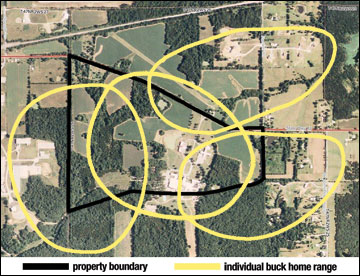 Figure 2. The home range of white-tailed deer may encompass several hundred acres across property boundaries.
Figure 2. The home range of white-tailed deer may encompass several hundred acres across property boundaries.
History of wildlife management cooperatives
The concept of working together to cooperatively manage multiple tracts of privately owned land for wildlife and economic objectives is not new. Wildlife management cooperatives made up of landowners and hunters have been operating in some parts of the country for several decades. Private timber companies in the southeastern United States have a long history of cooperatively working with individual hunting clubs (or cooperatives) on their properties to improve the quality of white-tailed deer populations and hunting opportunities. Since its inception in 1988, the Quality Deer Management Association (QDMA) has encouraged the formation of quality deer management cooperatives to improve deer management. More recently, wildlife management cooperatives have become popular in the Midwest, and landowners and hunting clubs have formed cooperatives to enhance white-tailed deer habitats and hunting opportunities. The ever-growing interest in managing for mature bucks will predictably lead to the development of additional wildlife management cooperatives throughout Missouri. To meet this increasing demand, the Missouri Department of Conservation often provides technical services and educational assistance for landowners interested in organizing wildlife management cooperatives.
Benefits of establishing a cooperative
Neighboring landowners and hunters who collaborate in the development of deer management goals and implement practices that benefit populations of white-tailed deer may reap several benefits. A wildlife management cooperative increases the chances that landowners and hunters will accomplish their deer and habitat management goals. For instance, because a cooperative covers a larger area than one landowner’s property, it increases the chances of reaching deer population goals, such as manipulating the herd’s age structure, adult sex ratio or density. Managing for mature bucks in older age classes or manipulating the sex ratio of a herd is almost impossible for one landowner to accomplish. However, such goals become more achievable when landowners work together and focus management efforts toward shared objectives, such as allowing bucks to reach a certain age before being harvested or harvesting a certain number of does to manipulate the herd’s adult sex ratio.
Wildlife management cooperatives also provide the opportunity to collect meaningful deer population data through conducting camera surveys and recording observational and harvest data. This data provides an estimation of the population demographics and overall condition of the herd. Using this information, a cooperative can make informed decisions and adjust management accordingly to achieve specified goals.
Landowners working cooperatively also gain other benefits:
- Control of trespassing and poaching. Membership may make landowners more watchful of what is happening on land that is part of the cooperative. This vigilance is an extremely important benefit for landowners living in the area as well as for absentee landowners who do not live on the property.
- Increased economic returns and property value. Improving habitat quality can increase the economic value of a property, especially with the enhanced potential for lease hunting. Access to quality hunting land is becoming an increasingly valuable commodity. A wildlife management cooperative can market these recreational opportunities to achieve economic goals.
- Accomplishment of habitat management objectives across multiple ownerships. Landowners who make habitat management investments on relatively small acreages (less than 100 acres) are rarely able to achieve the desired response within a population of white-tailed deer. Individual small tracts do not have enough acreage to satisfy all the habitat needs of a deer population. By working collectively, however, neighboring landowners dramatically increase their chances of successfully improving habitat over their large combined acreage.
- Improved relations with adjoining landowners. Members of a wildlife management cooperative tend to develop more understanding, trust and cooperation as they work together toward accomplishing their similar goals and wildlife management objectives.
- Improved habitat management and sharing of equipment and labor. Cooperatives improve the chances of successfully conducting timely habitat improvement practices that improve the area for hunting and benefit deer and other wildlife species (Figure 3). In addition, they provide opportunities for sharing equipment and labor, such as disking, planting, mowing, applying herbicides and planting shrubs or trees (Figure 4).
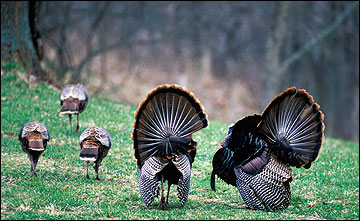 Figure 3. A variety of wildlife, such as wild turkey, can benefit from the establishment of wildlife management cooperatives.
Figure 3. A variety of wildlife, such as wild turkey, can benefit from the establishment of wildlife management cooperatives.
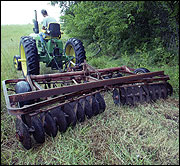
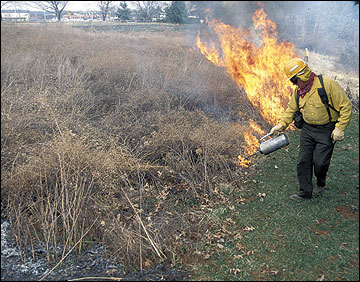 Figure 4. Wildlife management cooperatives provide opportunities for members to work together, such as by sharing equipment and labor required for conducting various habitat management practices on the property.
Figure 4. Wildlife management cooperatives provide opportunities for members to work together, such as by sharing equipment and labor required for conducting various habitat management practices on the property.
- Improved hunting opportunities on land within the cooperative. Members of a wildlife management cooperative can work together to improve the quality of hunting and ensure that deer stands are placed in optimal and proper locations (Figure 5).
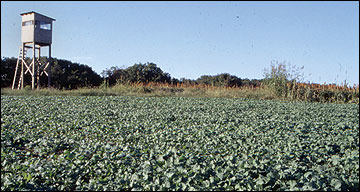 Figure 5. Landowners can work together to improve hunting opportunities on properties within a wildlife management cooperative.
Figure 5. Landowners can work together to improve hunting opportunities on properties within a wildlife management cooperative.
- Increased educational opportunities and services. Participating members can promote and organize educational programs on wildlife management topics of interest. Also, cooperatives may have better access to a variety of resource professionals and wildlife biologists, who can help develop wildlife management plans and provide management recommendations for deer and other wildlife species of interest.
Steps for successful organization
Establishing a successful wildlife management cooperative takes time and effort. The cooperative must have an organizational structure, which implies cooperation, leadership and communication among members. A proven process for successfully organizing a cooperative has the following five steps:
1. Evaluate local interest
The first step in establishing a cooperative is to evaluate your neighbors’ interest. Make a list of nearby landowners who share similar interests in wildlife, hunting or both. Then discuss the formation of a cooperative with each of them individually to find out who would support a cooperative.
2. Conduct an initial meeting
Next, conduct an organizational meeting of interested landowners. The primary purposes of this initial meeting are simply to inform the attending landowners about the cooperative approach of managing deer and other wildlife species of interest, and to gauge their interest in participating in a cooperative. You may wish to invite resource professionals, wildlife biologists and MU Extension specialists who can provide additional information, resources and guidance for developing and managing a successful wildlife management cooperative.
In most cases, not everyone who attends the meeting will immediately commit to the concept of a wildlife management cooperative. As stated above, the intent of the meeting is to provide information and discuss the possibility of forming a cooperative. During this initial meeting, the group should consider these and other questions:
- Do landowners in the area share similar wildlife goals?
- How would a wildlife management cooperative benefit each member?
- Are enough area landowners interested in supporting a cooperative?
- Do the interested landowners own enough acreage to support a cooperative?
- What needs to be done to establish the cooperative?
- Are people willing to invest the time necessary?
- Are landowners willing to work together to enhance habitats for deer and share data to improve deer populations and harvest strategies?
- Are volunteers willing to assume leadership positions and guide the effort to establish the cooperative?
A sample list of possible goals to accomplish (PDF)
3. Develop the organizational structure
The organizational structure of a wildlife management cooperative must meet the members’ needs. Wildlife management cooperatives can be very informal, with decisions made on a handshake, or can be more formal, with written and signed agreements. Various organizational elements that need to be considered are described below.
Membership agreement
The formal signing of a membership agreement is highly recommended. Although the document is a nonbinding agreement, the signing of it signifies a member’s commitment to the cooperative. A membership agreement states that the member agrees to cooperate with the other members and follow the wildlife management practices and recommendations adopted by the cooperative. By signing this agreement, a member commits to work toward accomplishing the cooperative’s goals.
A sample membership agreement (PDF)
Bylaws
Bylaws provide guidance in governing the operations and internal affairs of an organization. If a cooperative intends to charge a membership fee and thus open a bank account, the bank may ask for a copy of the bylaws.
Wildlife management plan for the property
A wildlife management plan is key to a successful wildlife management cooperative. The plan details the management goals and objectives, and outlines the management practices and actions that will need to be implemented to achieve the desired outcomes. A management plan is dynamic and should be adapted and updated as needed. Help developing the plan and making management decisions can be obtained from wildlife biologists and natural resource professionals.
Funding mechanism
The cooperative may benefit from collecting funds, in the form of monthly membership dues or an annual fee, to be used for operation expenses. Potential annual expenses may include conducting habitat management practices, developing newsletters, and providing meals and membership signs.
Leaders
The cooperative will need leaders, either voluntary or elected, to provide leadership and organization. Maintaining motivated leaders can sometimes be challenging for new cooperatives but is one of the most important organizational elements. Electing members to formal leadership positions can help instill a sense of responsibility to the group.
4. Recruit additional landowners
Once the cooperative has been organized, it may need to continue recruiting members, including adjoining landowners. In general, the more acreage that is actively under the cooperative’s management, the greater the likelihood of success, particularly for managing deer populations. If quality deer management is an objective, the cooperative will need to influence the management decisions across several thousand acres. Consequently, recruiting new members into the cooperative is an important element for success. Individual property owners each have landownership objectives, which may include crop or livestock production, timber management or wildlife recreation. The cooperative will need to market itself to attract a broad group of landowners, encouraging each to adopt the cooperative philosophy of managing the wildlife resource and recognize the value of their participation. Promotional brochures can be developed as a means to recruit new members. . Wildlife management cooperative signs are also a good marketing tool (Figure 6).
A sample promotional brochure (PDF)
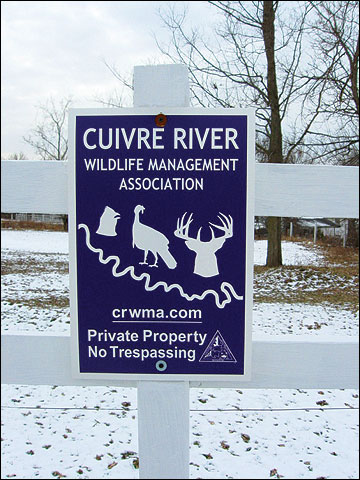 Figure 6. Signs can be an effective marketing tool.
Figure 6. Signs can be an effective marketing tool.
5. Achieve cooperative’s objectives
Collect information and data
One goal that a wildlife management cooperative can achieve is improving the habitat on the area to support a greater diversity of wildlife or to enhance the population of a specific species, such as white-tailed deer. Regardless of the management objective, the cooperative needs to develop a method of tracking progress. Collecting and interpreting data is critical for making management decisions and evaluating progress.
For more information on collecting and interpreting deer population data, refer to MU Extension publications G9481, G9482 and G9483 on estimating deer populations using camera surveys, observational data and harvest data, respectively, and G9484, Aging a Deer by Examining Its Jawbone. For example, removing and examining each harvested deer’s lower jawbone will provide important information about the population (Figure 7).
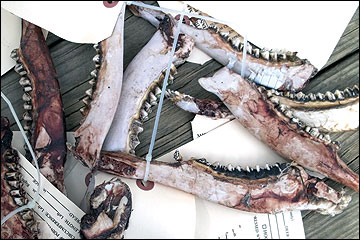 Figure 7. The lower jawbone of harvested deer can be extracted for obtaining an estimated age.
Figure 7. The lower jawbone of harvested deer can be extracted for obtaining an estimated age.
Maintain interest
Successful wildlife management cooperatives have an organizational structure that allows each member to make a valued contribution and enjoy benefits from participating. The key to keeping people involved in a cooperative is to make participation an enjoyable experience. Therefore, a cooperative should have a strong social component. Events like picnics, big buck contests, farm tours and educational programs will help members develop relationships and stay enthused about being involved with the cooperative.
Be sure to provide periodic updates on the cooperative’s progress toward various management goals and objectives. Timely meetings, newsletters or email messages are excellent ways to keep members informed. Other ways to communicate the cooperative’s status include providing members with annual reports of accomplishments, harvest summaries, population trends and maps.
Common attributes of successful cooperatives
Establishing a wildlife management cooperative is a proven method for effectively managing white-tailed deer and other wildlife species across multiple properties. Remember that members voluntarily choose to affiliate with a cooperative and membership does not entitle neighboring hunters to have access to your property nor diminish control of your property.
Cooperatives can be challenging to establish and maintain. Most successful cooperatives possess some common attributes:
Set realistic goals
A cooperative should adopt goals that will appeal to diverse landowners (and hunters) in the area. Setting realistic management goals can prevent members from being discouraged.
Have motivated leaders
To succeed, a cooperative must have a group of leaders who have agreed to organize and lead it.
Have active, engaged members
Each member should fully embrace the goals and objectives of the cooperative and take an active role in implementing the management plan.
Collect appropriate data
Accurate information must be collected, as it provides the basis for making sound management decisions.
Seek management advice from a professional wildlife biologist
A professional wildlife biologist can help develop realistic goals, provide management recommendations and analyze collected data. In addition, working with a wildlife biologist will increase the cooperative’s credibility in the eyes of prospective members. Wildlife biologists who work as consultants offer these technical services for a fee; the Missouri Department of Conservation often provides these services for free.
Communicate openly
Regular communication is essential to maintain positive relationships and trust among members. Periodic meetings, newsletters or other events are great methods to maintain relationships and keep everyone in agreement.
Effectively recruit new members
A wildlife management cooperative will not succeed without active members. Consequently, the cooperative must adopt an effective marketing and advertising strategy. Remember to market the cooperative in a way that will appeal to diverse landowners in the area.
Develop a membership agreement
Although not all cooperatives use one, a membership agreement is an excellent way for individual landowners to express their commitment toward following the adopted recommendations.
Provide a fun and safe atmosphere
Keep in mind that most members are not using the cooperative for economic gain. Instead, the cooperative will help individual landowners achieve more enjoyment from the improved recreational opportunities that result from working together to achieve wildlife goals and objectives on their properties.
Photo credits: Missouri Department of Conservation, Jeff Esely and Emily Flinn.